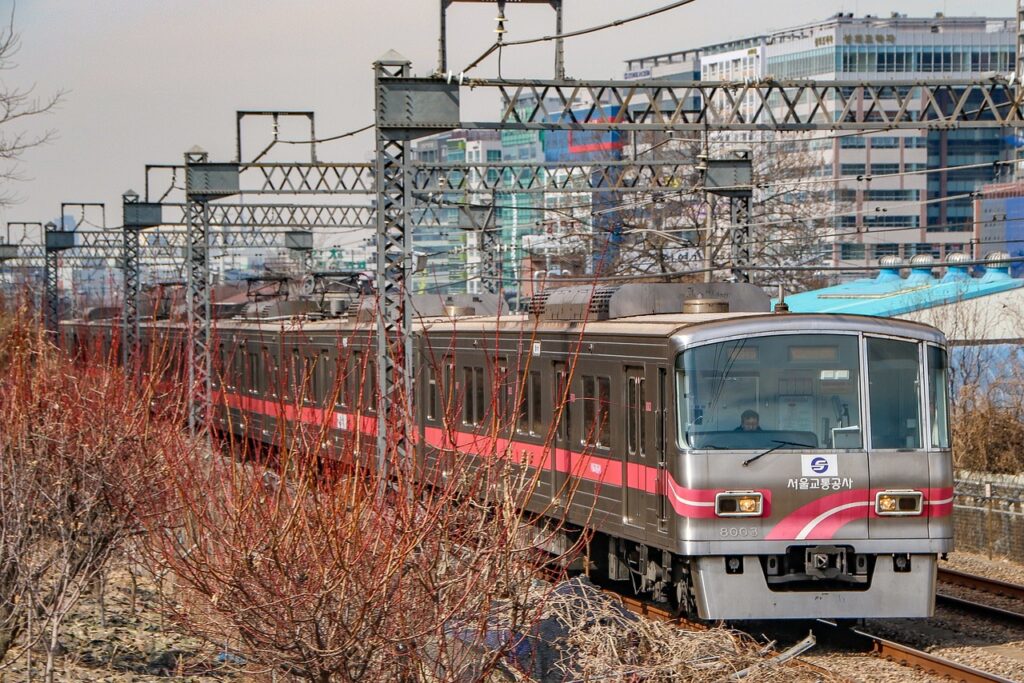As a leading player in automotive cybersecurity and mobility solutions, AUTOCRYPT has been an advocate for government-industry cooperation in improving transport safety, efficiency, sustainability, and accessibility. For nearly a decade, the company has been actively involved in discussions at the International Transport Forum, helping policymakers shape global transport policies that cultivate collaboration between the public and private sectors.
The International Transport Forum (ITF) is a sub-organization within the OECD, joined by 66 member states with the goal of making effective transport policies around the world. As the only international regulatory body with a mandate for all modes of transport, the ITF also serves as a think tank that tackles the world’s transport challenges.
AUTOCRYPT has been a long-standing member of the ITF’s Corporate Partnership Board (CPB), a platform that enables private companies to contribute to transport policymaking by engaging in discussions with policymakers. Every year, CPB members gather in Paris for an annual meeting with transport ministries known as the CPB Week. In the past September, AUTOCRYPT’s Chairman and Co-Founder Seokwoo Lee returned to Paris for the 10th anniversary of the CPB Week, where he received a certificate of appreciation from ITF Secretary-General Young Tae Kim in recognition of AUTOCRYPT’s support for shaping transport policies.

As an automotive cybersecurity and mobility solutions company, AUTOCRYPT has been sharing its experience and insights at the ITF, offering a different perspective on a wide range of transport challenges. Throughout the years, AUTOCRYPT introduced its unique business model for operating mobility-as-a-service (MaaS) for people with reduced mobility (PRM), emphasized the importance of adopting vehicle-to-everything (V2X) connectivity for safer roads, and stressed how secure Plug&Charge (PnC) technology will improve the electric vehicle (EV) charging experience and the reliability of public charging and payment.
Below are some of the main perspectives AUTOCRYPT has brought to the ITF.
Overcoming transport challenges for people with reduced mobility
Addressing the transport challenges faced by PRM hasn’t been easy. For many decades, transport accessibility has been seen as a responsibility of the welfare system. The public sector has been directly funding and operating paratransit services for residents and passing laws that enforce commercial transport operators to accommodate accessibility needs. Still, a large proportion of PRM travel significantly less than the average person. The problem is a lack of private initiatives. Transport accessibility shouldn’t be treated as an add-on component and should instead be built into the design of the service in the first place.
As a private company, AUTOCRYPT approached this challenge with a new perspective. By forming partnerships with local government bodies and non-profit organizations, AUTOCRYPT has built a range of MaaS platforms that are designed for and dedicated to PRM. Take 2U Access for example, a demand-responsive transport (DRT) service developed, operated, and optimized by AUTOCRYPT for Busan, Korea. Using service fleets provided by local partners, AUTOCRYPT was able to utilize its secure fleet management solution to automatically analyze demand and adjust its supply to ensure maximized efficiency and minimized operational cost. This enabled much faster response and higher satisfaction compared to conventional paratransit services.
To set an example and encourage more government-industry collaborations on accessible transport, AUTOCRYPT demonstrated this solution at the ITF 2023 Summit this year to policymakers.

Achieving zero road fatality with vehicle-to-everything connectivity
Fatalities and injuries due to road accidents are another major concern for transport policymakers. With an estimated 1.3 million fatalities and between 20 to 50 million injuries on the road each year, reducing road accidents have become one of the primary objectives of every transport ministry. Currently, most of the publicly led countermeasures involve a reduction of speed limits or banning vehicles from urban centers. However, these measures do not address to root cause of traffic accidents and risk the adverse effect of putting more pressure on the already strained public transport and causing even greater road congestion.
AUTOCRYPT has been an advocate for V2X deployment. By enabling vehicles to seamlessly communicate with surrounding vehicles, road infrastructure, and the handheld devices of vulnerable road users (VRU), every participant on the road can receive real-time warnings and seamlessly cooperate with one another. So far, AUTOCRYPT has been the sole V2X security provider for all South Korean smart roads and has also implemented embedded V2X security for some of the world’s largest OEMs.

Improving the EV charging experience through secure Plug&Charge
Many governments around the world have established progressive goals to achieve zero emissions in the transport sector. Many have offered subsidies and incentives on EV production and purchases. Thanks to these efforts, most EVs today are just as reliable as ICE vehicles. However, the reliability of the charging stations is lagging. A J.D. Power report published in May 2023 revealed that 20.8% of consumers have recently visited a public charging station that does not work, and that the overall satisfaction with Level 2 public charging has been declining. Although range anxiety is becoming irrelevant, charging anxiety is growing.
AUTOCRYPT believes that charging should be as easy as fueling, and that drivers shouldn’t have to carry multiple charging membership cards and spend time looking for charging stations that are compatible with their car. Its PnC security solution is built on the vehicle-to-grid (V2G) communication protocol, enabling secure one-step charging without the need for membership and credit cards. Furthermore, it has been operating charger information platforms across South Korea to help drivers identify the nearest available charger that has the compatible plug type for their car.
Government-industry cooperation: the determinant for future transport
Transport affects every aspect of our lives and hence requires very thoughtful planning and development. This makes government-industry cooperation a crucial step to solving the world’s transport challenges. When making transport policies, the public and private sector must share the same vision and focus on establishing qualitative goals.
AUTOCRYPT will continue to work closely with the public sector on shaping a safe, efficient, sustainable, and inclusive transport ecosystem.






